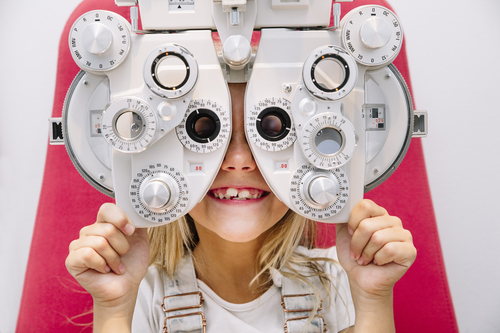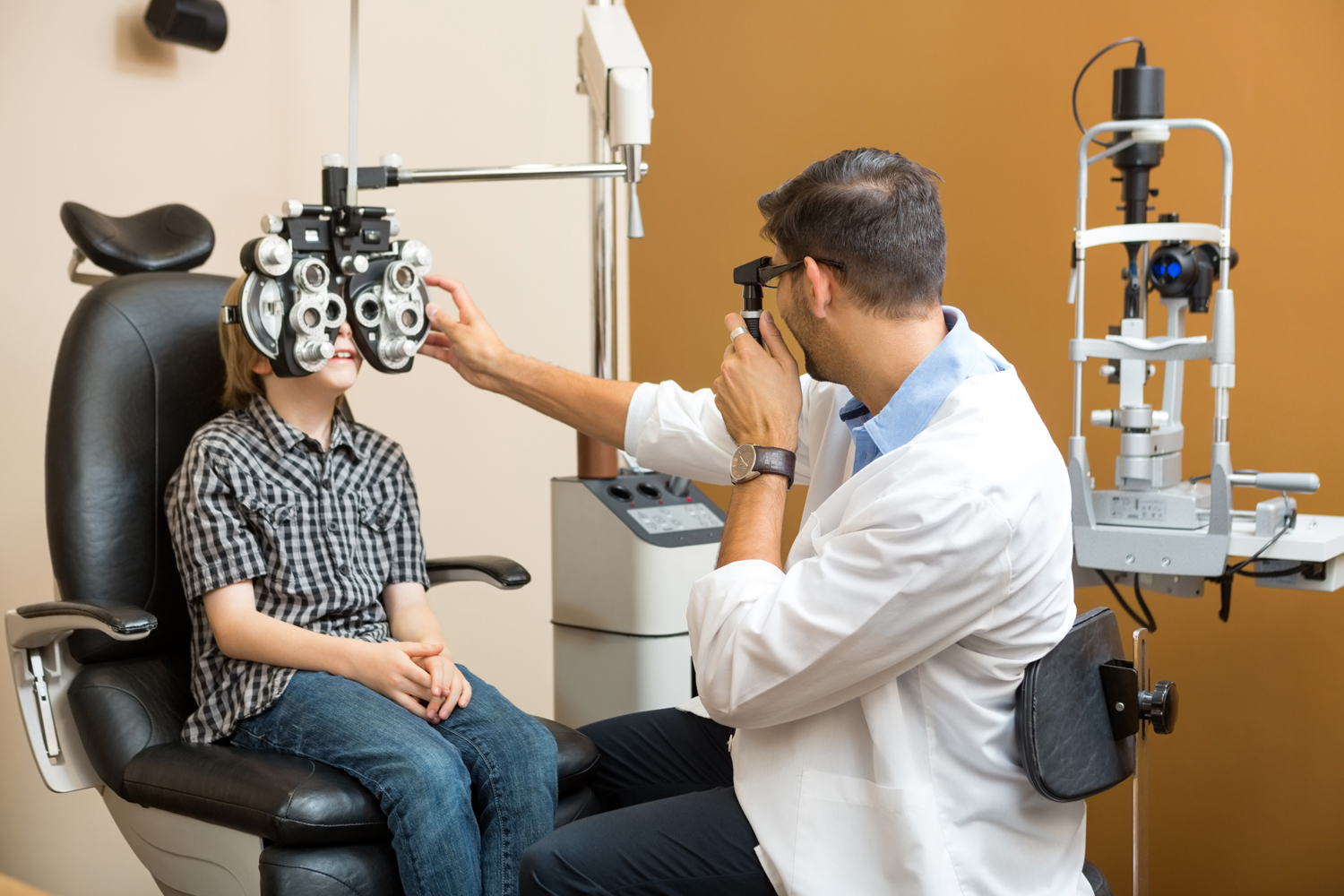The Relevance of Regular Check-Ups with an Eye Doctor Optometrist
Wiki Article
Exploring the Most Current Technological Advancements in Optometry and What They Mean for Eye Doctors
In the ever-evolving field of optometry, current technical innovations are improving exactly how practitioners come close to eye care. From the precision of Optical Comprehensibility Tomography to the nuanced insights supplied by AI-driven diagnostic devices, these innovations are establishing new criteria in individual assessment and treatment. Teleoptometry is poised to redefine availability, guaranteeing that proficiency transcends geographical limitations. As these advancements penetrate the practice, optometrists are confronted with the obstacle of welcoming these devices to improve person end results. The concern stays: how will these technical changes redefine the functions and responsibilities within the profession?Advancements in Diagnostic Equipment
Progressing the field of optometry, advancements in analysis devices have reinvented the way eye care experts analyze and diagnose visual problems and ocular problems. The previous years has actually experienced significant technical advancements, making it possible for even more comprehensive and precise analyses. Optical Comprehensibility Tomography (OCT), for example, offers high-resolution cross-sectional photos of the retina, permitting for the early detection of diseases such as glaucoma and age-related macular degeneration. This non-invasive imaging strategy has come to be important in modern optometric practice.Another key technology is the intro of sophisticated corneal topography systems, which map the surface curvature of the cornea with accuracy. These tools are specifically beneficial for suitable get in touch with lenses and detecting corneal problems. Electronic retinal imaging has transformed traditional ophthalmoscopy, supplying comprehensive, panoramic sights of the retina that facilitate complete aesthetic evaluations.
The growth of wavefront aberrometry has likewise been essential, enabling the evaluation of refractive errors with unequaled accuracy (Eye Doctor Optometrist). This innovation aids in personalizing corrective lenses and enhancing medical outcomes for refractive surgical treatments. Jointly, these analysis advancements empower optometrists to deliver superior person care, making sure very early intervention and tailored treatment methods, ultimately improving visual health and wellness end results
AI in Patient Management
Building on the foundation of cutting-edge analysis tools, the incorporation of synthetic intelligence (AI) in patient administration represents a transformative jump for optometry. AI systems are increasingly employed to enhance performance, precision, and customization in individual treatment.Furthermore, AI-driven platforms promote structured patient interactions and management processes. Automated scheduling, digital consultations, and personalized follow-up plans not only improve individual contentment yet also optimize time monitoring for experts. These systems can triage patients based on the urgency of their problems, guaranteeing that those in essential requirement obtain punctual focus.
Moreover, AI improves decision-making by providing optometrists with evidence-based suggestions and therapy paths. By incorporating data from electronic health and wellness documents, AI devices offer insights that notify professional choices, reducing the risk of errors and enhancing person results. As AI continues to develop, its duty in person management will likely expand, improving the landscape of optometric treatment.
Developments in Retinal Imaging
In the realm of optometry, retinal imaging has witnessed exceptional technological developments that are enhancing analysis capacities and individual care. Innovations such as Optical Coherence Tomography (OCT) and fundus photography have actually transformed how eye doctors imagine and examine the retina.Boosted imaging techniques like OCT angiography are further refining diagnostic precision. This non-invasive method maps blood flow in the retina, providing important insights right into vascular health and wellness without the need for color injections. In addition, adaptive optics technology is being incorporated into retinal imaging systems to deal with eye aberrations, providing unprecedented photo quality. Such innovations promote the identification of minute retinal modifications that can signify disease progression.
Additionally, advancements in man-made knowledge are enhancing retinal imaging by making it possible for automated analysis of large datasets. These systems assist optometrists in recognizing patterns a sign of pathology, thereby improving diagnostic precision and efficiency. Jointly, these innovations are transforming retinal imaging into a cornerstone of modern-day eye care, improving end results and broadening healing possibilities.
Teleoptometry's Expanding Duty
Teleoptometry is progressively becoming an important part of eye treatment, driven by developments in electronic interaction and diagnostic devices. As optometry embraces electronic improvement, teleoptometry facilitates remote appointments, allowing optometrists to extend their solutions past traditional limits. This is specifically helpful in underserved and a knockout post rural areas where access to specialized eye treatment is typically restricted. By leveraging high-resolution video conferencing and advanced retinal imaging, eye doctors can carry out comprehensive eye exams from afar, Read More Here making certain prompt medical diagnosis and therapy.The integration of expert system (AI) further improves teleoptometry, making it possible for the analysis of visual data and assisting in the discovery of ocular problems such as glaucoma and diabetic retinopathy. AI-powered algorithms can swiftly analyze intricate imaging data, providing eye doctors with valuable insights that boost medical decision-making.
Additionally, teleoptometry supports connection of care through seamless combination with electronic health and wellness documents (EHRs), enabling eye doctors to preserve thorough client backgrounds. This makes certain that individuals obtain regular and customized treatment also when speaking with different professionals.
Despite these benefits, challenges continue to be, including ensuring data safety and security and taking care of person expectations. Nonetheless, teleoptometry represents a substantial stride towards even more obtainable, efficient, and patient-centered eye treatment. As innovation progresses, its function is poised to expand better.

Future Fads in Eye Care
A myriad of innovative fads is readied to improve the future of eye care, driven by technical advancements and the progressing needs of clients. One substantial pattern is the assimilation of expert system (AI) in diagnostics, which guarantees to improve the accuracy and performance of eye assessments. AI algorithms can analyze substantial amounts of data from retinal photos, possibly identifying conditions like diabetic retinopathy and glaucoma earlier than traditional approaches.Moreover, personalized medicine is acquiring grip in optometry, with hereditary testing notifying customized therapy strategies. This strategy intends to maximize patient outcomes by tailoring treatments to specific genetic accounts. Wearable technology, such as smart contact lenses, is also coming up, using real-time surveillance of intraocular stress or sugar degrees, therefore providing continual understandings into systemic and eye wellness.
The fostering of increased reality (AR) and digital reality (VR) in training and person education and learning is an additional arising pattern. These modern technologies supply immersive experiences that can enhance understanding and skills both for individuals and optometrists. As these trends evolve, optometrists should stay abreast of technical developments to give sophisticated care, making sure enhanced patient end results and fulfillment in the dynamic landscape of eye care.
Final Thought

Jointly, these analysis innovations encourage eye doctors to supply superior person treatment, making certain early treatment and customized therapy strategies, inevitably boosting visual wellness results.

As these modern technologies proceed to evolve, eye doctors must adjust and integrate them right into technique, eventually optimizing workflow performance and boosting the requirement of eye care provided to individuals.
Report this wiki page